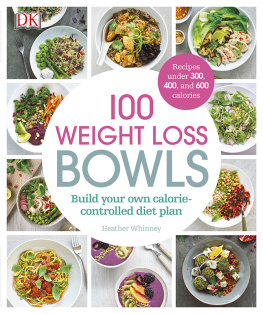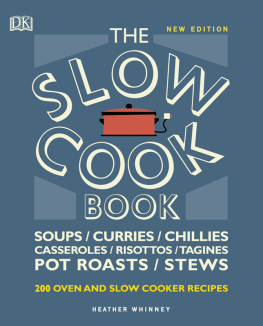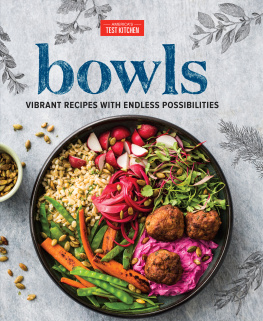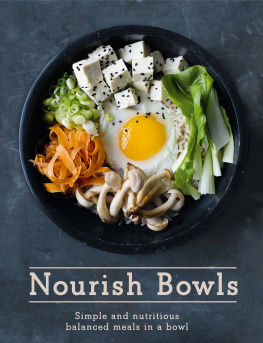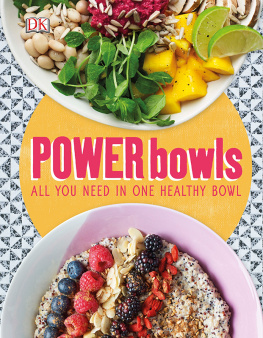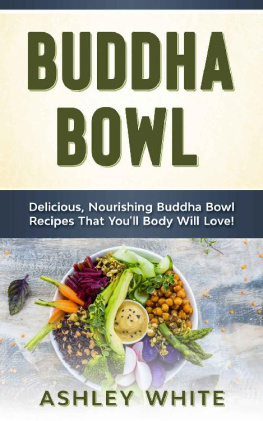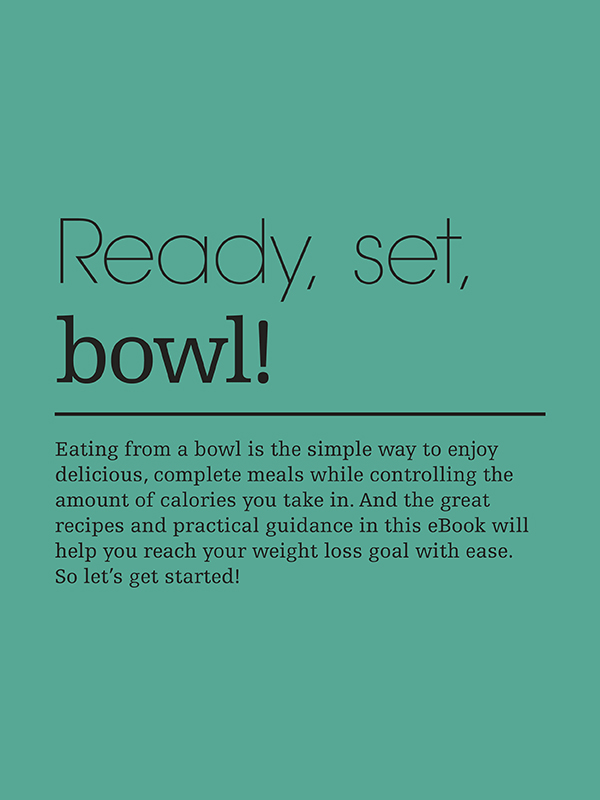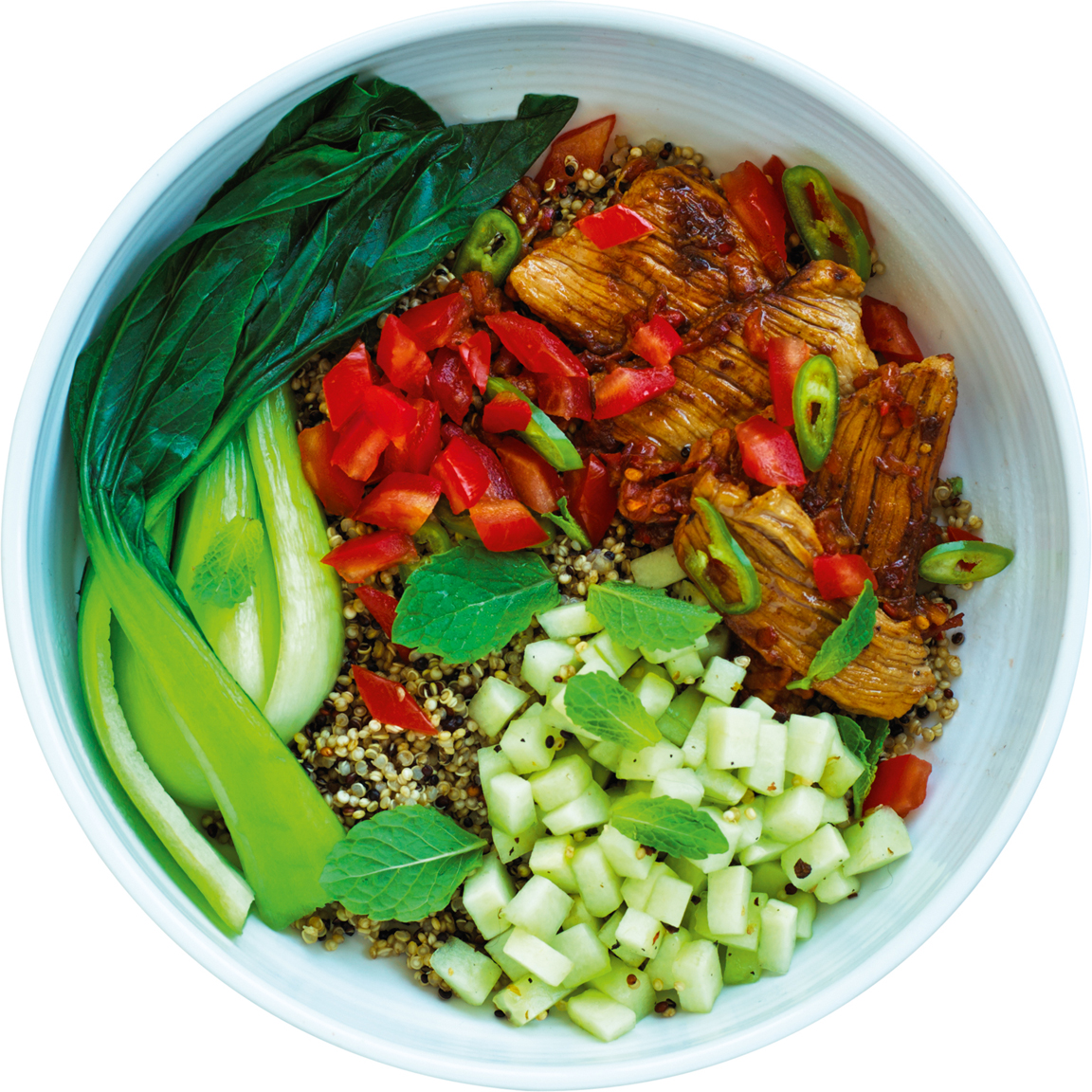Contents
Guide
Why eat from a bowl?
Life today feels increasingly busy, and it can be hard to keep track of your weight. So a quick-to-prepare one-bowl meal of colourful, tasty food hits the spot when you need a healthy energy boost thats comforting and filling, but low in calories.
Bowls are the new plates
Food from a bowl can help with portion control: a bowl can typically hold less food than a dinner plate, allowing you to monitor your portion sizes and keep them consistent, while still providing you with an ample meal. Because of their rounded shape, bowls give the illusion of greater volume compared to plates, tricking your brain into believing that food served from a bowl is more substantial than exactly the same amount presented on a plate.
Bowl recipes should have a balanced blend of gutsy flavours: sweet, sour, bitter, salty, and umami. And the broad range of herbs, spices, seeds, and dressings you can add increases their flavour without adding significant calories. Portability is also a bonus: because bowl food is designed to be a complete meal, its the perfect on-the-go solution, so you wont have to resort to bad choices when out and about.
Enjoy your food
Certain foods are best served in a particular way, which explains why a meal can look more interesting and taste better when its served in a bowl. When we eat, our senses are impacted by the look of food first, then its texture and flavour, which increases the amount of pleasure we take in eating, and even our perception of how satisfied and full we feel at the end.
A balanced meal
By choosing a balance of healthy food groups that combine together well in one dish wholegrains, lean protein, vegetables, and a sauce or dressing you can control the ingredients you use and avoid hidden or unnecessary calories. This nutritionally complete approach will also help keep you feeling fuller for longer, so you wont need to snack: a bowl of creamy avocado, juicy tomatoes, tender fish, and crunchy greens, for example, works not only because of its nutritional content and appealing colour, but also because it has a balance of textures that contributes to a feeling of being satiated.
A bowl-based plan for the future
Its a simple formula, but it works well: a fibre-rich diet with lots of lean protein and vegetables in a bowl will help with gradual and sustained weight loss. Its also a fun, creative way to eat and is extremely versatile: you can very easily adapt the ingredients you use and how you prepare them according to the season, such as including raw ingredients for extra colour and crunch in summer, or opting for a warming bowl of hot food in winter.
Whats in a name?
You may hear different names for bowl foods, both within these pages and at takeaways, so heres a guide to the most common.
- Acai: Features the superfood acai berry, which provides antioxidants and a tangy taste thats ideal for bowl food
- Breakfast: Designed to keep you fuller for longer, these will often use eggs, pulses, or beans for protein
- Buddha: Looks like Buddhas belly: piled high with veggies, beans, nuts, and/or grains
- Hippie: Features multiple superfoods in one bowl, such as quinoa, seeds, berries, vegetables, and more
- Nourish: Looks like a salad in a bowl and is usually overflowing with protein, carbs, and healthy fats
- Poke (poh-kay): A bowl of deconstructed sushi, Hawaiian-style, this starts with raw fish and is commonly served with sushi rice and vegetables
- Power: A super-balanced bowl full of protein and power foods to give you all-day energy
- Rice: Starts with a base of rice (typically brown) and is topped with meat or fish and vegetables
- Smoothie: Blends fruits and/or vegetables into a morning meal and is topped with nuts or seeds for a crunchy finish
- Sushi: Essentially a take on a sushi roll-in-a-bowl, that combines healthy fats, sea vegetables, and sushi rice
Bowl food is gaining popularity because it can increase the pleasure of meals.
What makes a nutritious weight loss bowl?
Balanced, calorie-controlled meals are key to weight loss. Bowl food fits the bill perfectly if you choose good-quality ingredients from crucial food groups and follow a few simple guidelines.
Your nutritional needs
For optimum health and vitality, your body requires a range of essential nutrients every day. If you also want to lose weight, every bite must matter, so you dont have to consume unwanted extra calories. Start with the premise that most of your meal must consist of complex carbohydrates such as wholegrains and vegetables which also provide much-needed fibre. Add smaller proportions of lean protein and beneficial fats and you have the basis for the ideal, nutritious weight loss bowl.
Complex carbohydrates
Fresh vegetables and wholegrains are called complex carbohydrates because they contain plenty of fibre, which is slowly broken down by the body into a steady supply of glucose that fuels the bodys cells and enables you to function at every level, from breathing to exercise. Refined foods, known as simple carbohydrates, contain no fibre and are quickly converted by the body into glucose, creating a swift energy surge that can soon leave you feeling tired and hungry again.
Make sure at least half the ingredients in your bowl are complex carbohydrates such as brown rice, oats, beans, legumes, and an array of fresh vegetables, which will maximize your intake of minerals, vitamins, fibre, and antioxidants.
Protein
The second crucial food group is lean protein. It takes the body longer to break down protein than carbohydrates, so eating protein ensures youll have steadily regulated glucose levels over several hours and leaves you feeling fuller for longer. In addition, lean proteins such as tofu, fish, eggs, and chicken are known as complete proteins because they provide crucial amino acids that the body needs to function effectively. Make sure that approximately one-quarter of your bowl is made up of lean protein.
Monounsaturated fat
The days when all fat was deemed bad if you were on a weight loss programme are over; now you just need to choose your fats carefully. Monounsaturated, or essential, fats contained in such foods as avocados, olive oil, nuts, and seeds contain many beneficial nutrients that are also crucial for the body to work properly. These essential fats take even longer for the body to break down than carbohydrates or protein, further slowing the rate at which your food is converted into glucose and making them the third indispensable food group. Its the texture, or mouthfeel, of these beneficial fats that can enhance your eating experience and help you feel full. However, you dont need huge amounts of essential fats; they should make up about 20 per cent of a meal.
Saturated fat
There is a place for certain saturated fats in a weight loss plan: coconut oil, some cuts of meat, and dairy products in small amounts all provide the body with useful nutrients. However, if you find you crave fatty foods, try including monounsaturated fats such as avocados and nuts into your bowls, and you may find you no longer reach for nutrient-poor foods, such as doughnuts.

